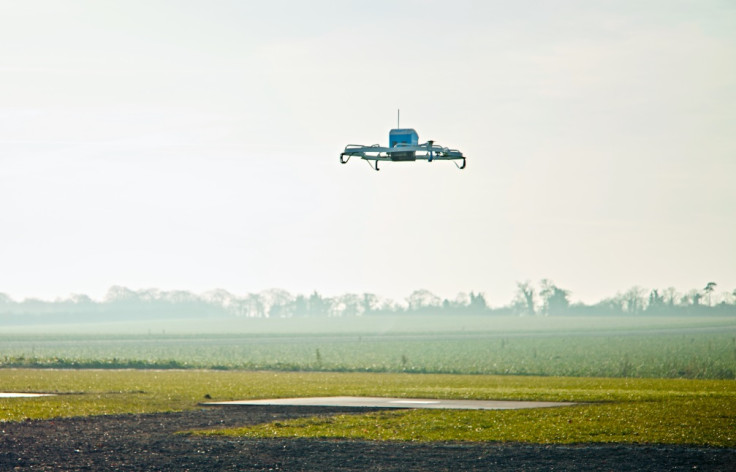Amazon's delivery drones trained to deal with dogs and clothes lines
Amazon teased a few new facts about the Prime Air delivery drone trials at Mars conference.

Amazon hasn't given up on its dreams of using drones to deliver packages – rather, numerous tests still need to be performed and the retail giant is trucking along in the background to get the technology where it needs to be in order to make drone deliveries possible.
According to Backchannel Magazine, at the secret invite-only MARS 2017 conference on 19 March, Amazon held the first live demonstration of the Amazon Prime Air unmanned aerial vehicle (UAV) flying and landing on a lawn carrying a familiar cardboard box.
Amazon has been testing out delivery drones since 2015, and in July 2016 signed a major partnership with the UK government to explore the safe use of drones to make deliveries in rural and suburban areas. The testing ground in the UK is located in Babraham, a small village in South Cambridgeshire, but UAVs are also being tested at an undisclosed semi-rural location somewhere in America.
Fast speeds and long flying range
The drones have been built to fly at speeds of at least 60mph, at altitudes of between 200-400ft. Although this is a relatively low altitude, if Amazon's dreams are to be realised legislation will have to be put in place to disclose where it is safe for drones to fly. Anywhere that falls under Class B airspace, which is from ground level to 10,000ft, must be kept clear as these areas are directly in the path of commercial aircraft flights.
The Prime Air delivery drones have battery life capable of handling a 20-mile roundtrip flight from the Amazon warehouse to the customer and back, where the battery is swapped out before the next flight. GPS will guide the UAV to its destination, and when the drone reaches the customer's residential property it will land on a unique marker pre-determined by the customer.
The customer will place a welcome mat in a suitable location, such as the back garden, and the drone will hone in on the marker to land.
Sophisticated obstacle avoidance and safety system
The retail giant's artificial intelligence experts are also working on an obstacle avoidance system to help it avoid danger, such as a rule to help them detect clothes lines. The testing grounds also feature a simulated dog to help Amazon see how UAVs would respond to a canine trying to protect its territory.
Another idea is for the drones to land on rooftops in a city so that people who live in apartments can get their packages. In this case, it would make sense for each drone to be able to pick up and drop off multiple packages at once.
Amazon is also designing a system to help the drone protect itself when it senses a danger to itself or others. In such a situation, the drone will immediately abort the planned flight and return to base or search for a safe landing spot from which to send a rescue signal.
The retail giant's ideas sound immensely interesting, but only time will tell if the technology will mature enough for mass use, as all of these scenarios will have to be exhaustively proven to authorities around the world before Amazon Prime Air can take off.
© Copyright IBTimes 2025. All rights reserved.






















